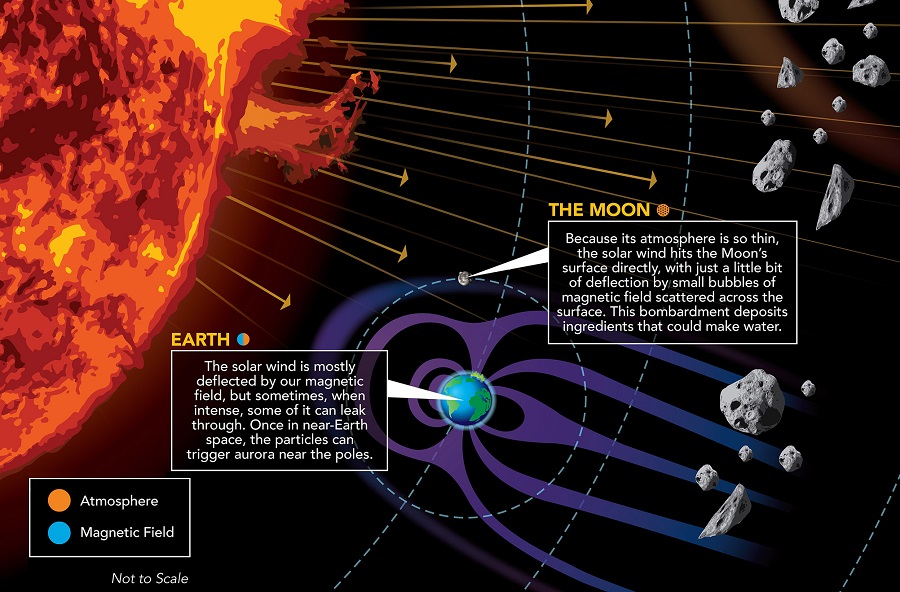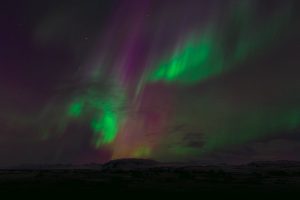
A potent blast of energy in the form of solar wind from the Sun could impact Earth early on Tuesday, NASA space weather models warn. During a solar storm on Saturday, a large filament was launched off the surface of the sun and appears to be headed to Earth. Solar filaments are massive arcs of plasma which leap off the surface of the sun, leaving dark lines or curves behind in imagery because they aren’t as hot as the Sun’s surface behind them. Filaments and their electrified gas are held in place by powerful magnetic fields in the Sun’s atmosphere and usually appear above sunspots, which are magnetically disturbed regions on the Sun’s surface.
While the solar wind is mostly deflected by the Earth’s magnetic field, intense solar wind incidents can leak through the Earth’s protective shield. At the very least, the particles can trigger aurora near the poles; the more intense the wind, the more the aurora will move away from the poles to the mid-latitudes.
NASA’s Solar Dynamics Observatory identified the filament in imagery over the weekend; now, their computer forecast models, such as the WSA-ENLIL Solar Wind Prediction system, show a nearly direct hit on Earth early Tuesday. However, like computer forecast models used by meteorologists on Earth, the forecast will be refined over time to pin-point just what kind of impact, if any, is possible from this burst of energy moving through the solar system.
Intense coronal mass ejections, also known as “CME” for short, could create problems on Earth. A coronal mass ejection is a significant release of plasma from the solar corona, often following solar flares in solar wind. These huge explosions of plasma originate from highly twisted magnetic field structures on the Sun. When these explosions occur from active sunspot regions on the Sun, it is not uncommon to see them associated with large solar flares. Some fast CMEs can reach the Earth in little as 14 hours, while others may take several days. According to the National Weather Service’s Space Weather Prediction Center (SWPC), “the first sign of a CME hitting the Earth environment is the plasma density jump due to the shock wave’s passage.” Forecasters use what is known as a coronagraph, which blocks the extremely bright disk of the Sun, so they are able to determine the CME’s size, speed, direction and density. These tools will be put to use to see if this solar energy event coming towards the Earth is concerning or not.

While typically known for their weather forecasts, the National Oceanic and Atmospheric Administration (NOAA) and its National Weather Service (NWS) is also responsible for “space weather.” While there are private companies and other agencies that monitor and forecast space weather, the official source for alerts and warnings of the space environment is the SWPC. The SWPC is located in Boulder, Colorado and is a service center of the NWS, which is part of NOAA. The Space Weather Prediction Center is also one of nine National Centers for Environmental Prediction (NCEP) as they monitor current space weather activity 24/7, 365 days a year.
The SWPC will evaluate further to see if any space weather advisories are needed for Earth. At this time, the SWPC has issued a “G1” Geomagnetic Storm Watch for Tuesday and Wednesday. Beyond lighting up the aurora in more southern locations than usual in the Northern Hemisphere, a G1 storm could cause weak power grid fluctuations; there could also be minor impacts on satellite operations and communications systems.
If a more severe impact is expected, the SWPC would issue a more serious warning. A very severe solar storm making a direct impact on Earth could be catastrophic to modern life, damaging electronics, electricity transmission and generation systems, and Earth-orbiting satellites and spacecraft.
With this solar wind event, the Northern Lights could be strong at northern latitudes and may appear further south than usual. One of the better ways to track aurora activity is through the free Aurorasaurus app. Aurorasaurus allows users to share aurora sightings and pictures while also alerting others to the presence of aurora.